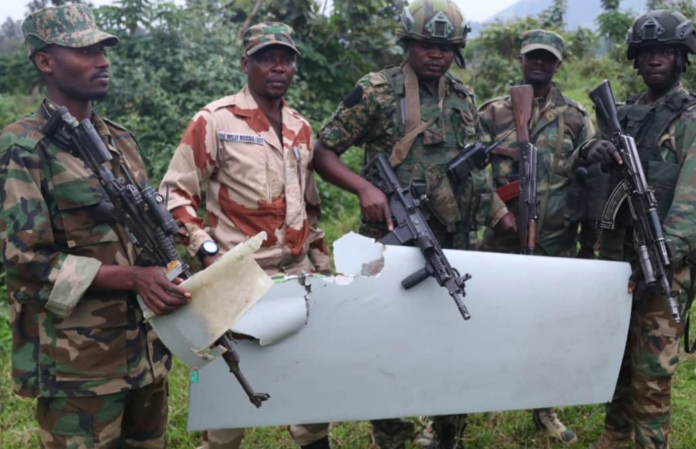Nord Kivu, January 24, 2024- The recent conflict in the Masisi territory of North Kivu, Democratic Republic of Congo, has escalated, marked by intense clashes between M23 rebels and Wazalendo resistance fighters. The village of Kanyangohe, less than a kilometer from the town of Mweso, has become a focal point of these hostilities.
Reports from local sources indicate heavy and light gunfire in the outskirts of Mweso, a town under M23 control. The conflict has forced many residents to seek shelter under their beds or flee towards the Mweso hospital.
This confrontation, ongoing for over three days, pits M23 rebels against Wazalendo fighters along the Mweso-Kashuga and Mweso-Nyanzale axes. The presence of Wazalendo forces near Mweso suggests their advancement towards Kitshanga, challenging M23’s hold on the region.
On the morning of January 24, 2024, the situation in Mweso and its surroundings became increasingly tense due to the combat between the Congolese army, Wazalendo forces, and M23 rebels. According to Emmanuel Kwereka, a civil society member in Mweso, the M23 rebels initiated an attack on Wazalendo positions around the town. The Wazalendo are currently engaged in combat, pushing the frontlines towards Kitshanga.
By 14:00, sources close to the Kinshasa government reported that Mweso had completely fallen under the control of the young Wazalendo fighters. Ngowa Patrick, a Wazalendo youth in Mweso, expressed their intention to pursue M23 up to Kitshanga and ensure the entire Masisi is under their control. However, this claim has not been independently verified.
In a contrasting account, Lawrence Kanyuka, a spokesperson for M23, posted an update on January 24, 2024, at 8:20 am. The M23 accused the Kinshasa regime of refusing dialogue and choosing war, despite calls from regional leaders and international partners. They claim the acquisition of combat drones by President Tshisekedi Tshilombo, which they allege are causing civilian casualties. The M23 also asserts that they shot down one of these drones and criticizes the MONUSCO peacekeeping forces for biased actions and the unintentional killing of civilians.
Willy Ngoma, another M23 spokesperson, presented images claiming to show remnants of a downed FARDC drone. However, Wazalendo resistance leaders countered this claim, suggesting the images were of a previously downed MONUSCO helicopter and not related to current events.
Amidst these conflicting narratives, independent analysts urge caution in accepting either side’s claims without independent verification. The complexity of the situation is further compounded by propaganda efforts on social media by both M23 and its supporters, and those opposing them. This includes the Rwandan government and M23 showcasing footage of events whose authenticity and timing are questionable.
In the midst of these propaganda efforts, M23 has been actively promoting its leadership and military achievements, including asserting the survival of Colonel Bahati, a key figure rumored to have been killed in a drone strike, who has now been appointed to a leadership position within the M23-controlled area.
This ongoing conflict in North Kivu highlights the complexities of regional politics, the challenges in establishing factual narratives amid war, and the profound impact of such conflicts on civilian populations.





























































